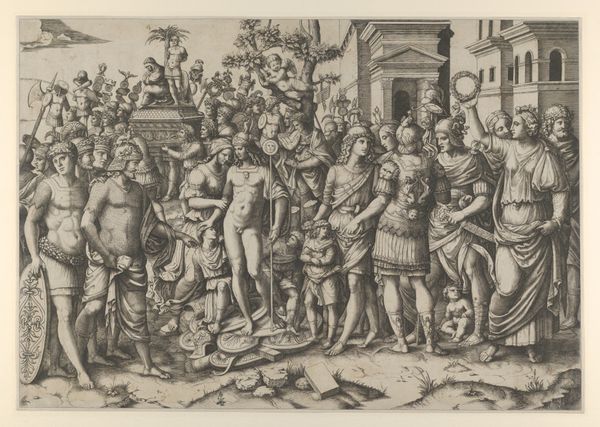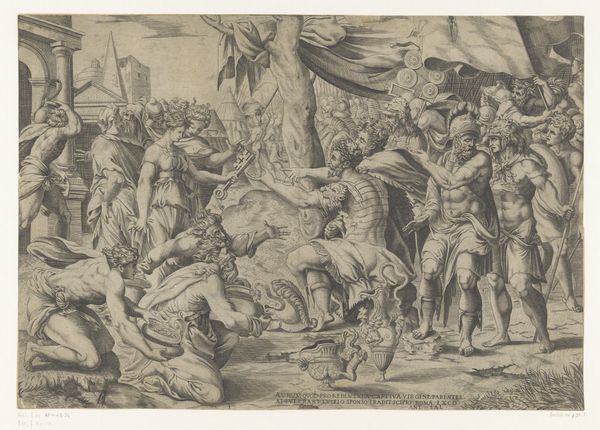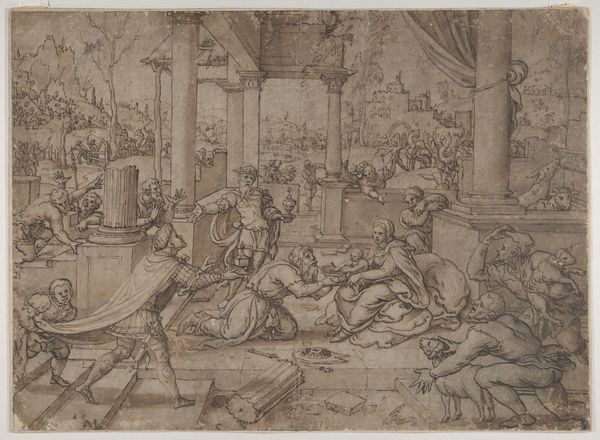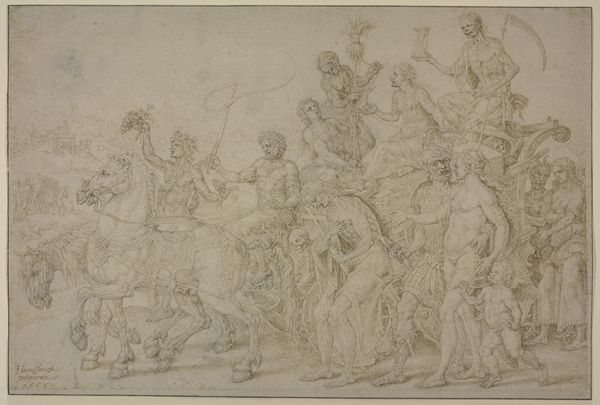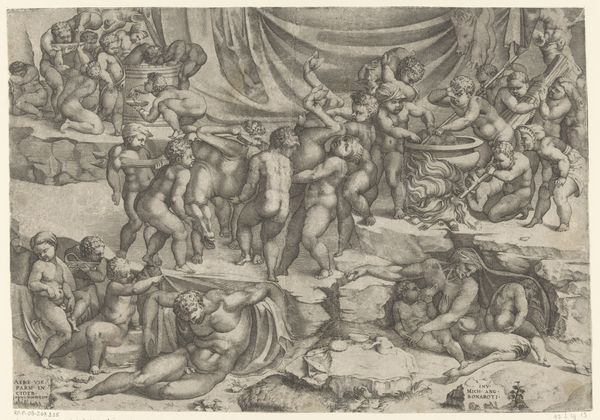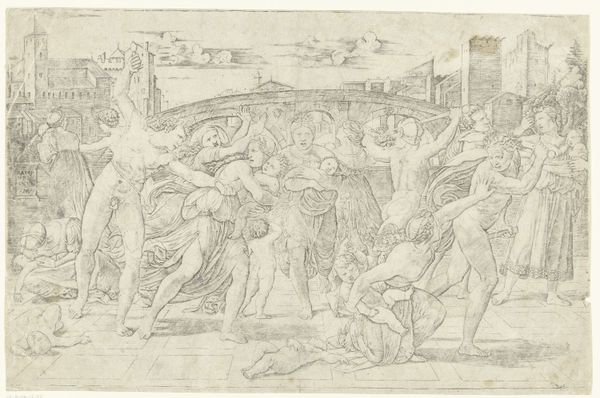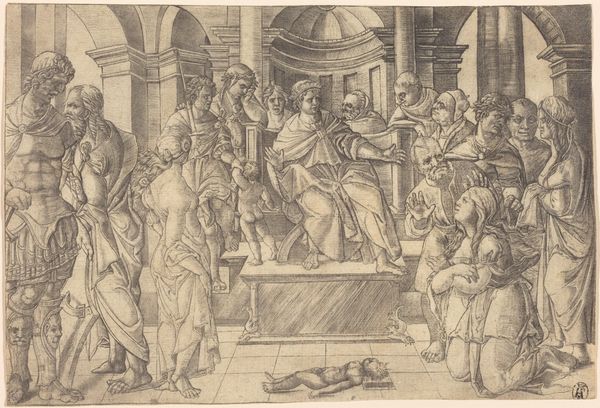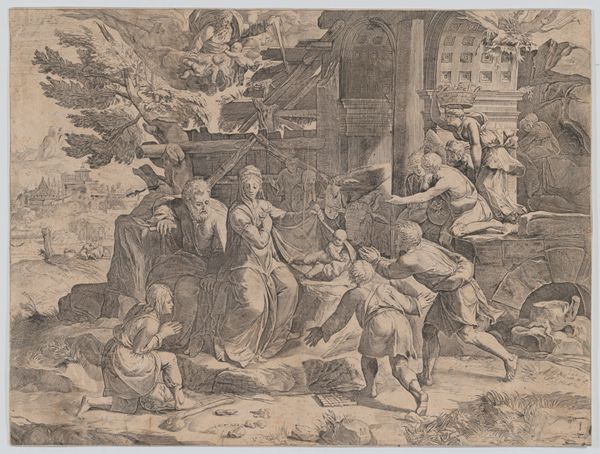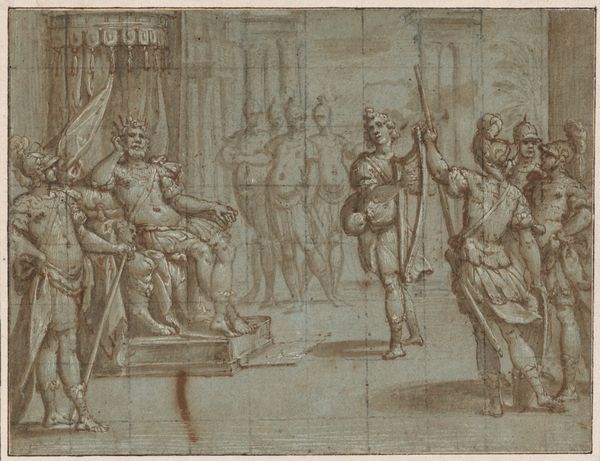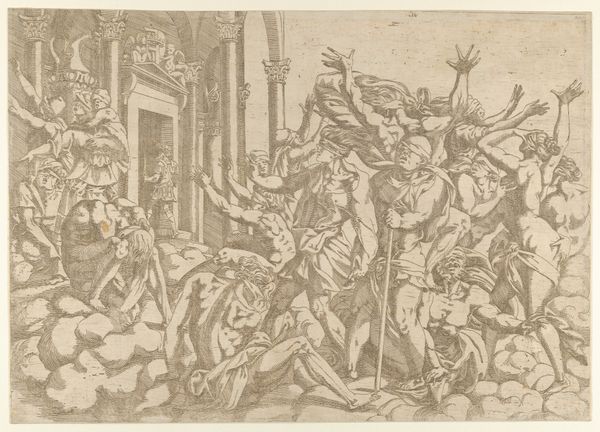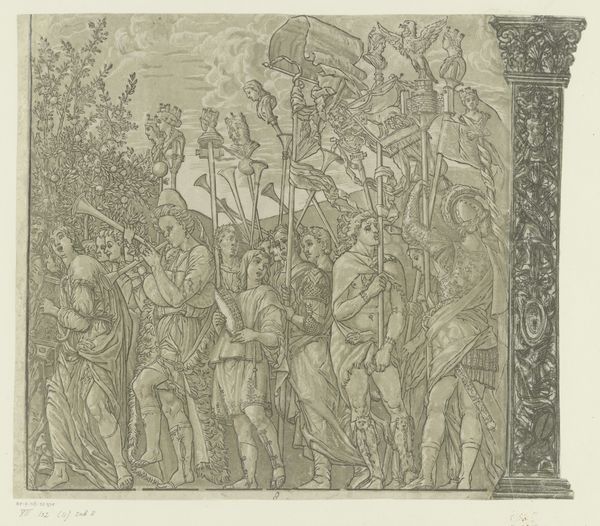
drawing, print, engraving
#
drawing
# print
#
figuration
#
romanesque
#
history-painting
#
italian-renaissance
#
engraving
Dimensions: Sheet: 13 3/8 × 19 5/16 in. (34 × 49 cm)
Copyright: Public Domain
Editor: This is "The Triumph of a Roman Emperor," an engraving by Marcantonio Raimondi made around 1525 to 1535. I find it a bit chaotic; so much detail packed into one scene! What story is Raimondi trying to tell, and why depict it this way? Curator: Well, chaos can be a very deliberate tool, especially in visualizing power. This piece reminds us of how deeply Renaissance artists looked to classical Rome for legitimizing present power structures. Consider the role of printmaking at the time. Editor: In what way? Curator: Printmaking allowed for wider dissemination of imagery and ideas. Replicating a scene of Roman triumph like this served not just as historical record but as a potent symbol of authority for contemporary rulers. How do you see that playing out in the imagery itself? Editor: I suppose all the detail creates a sense of overwhelming might. But doesn't idealizing Roman power gloss over some uncomfortable realities? Curator: Precisely. It’s critical to analyze the selective historical narrative here. This isn't a documentary. It's a carefully constructed message, designed to associate present power with the glory of Rome, ignoring the violence and social hierarchies that built that empire. It places the figure of the Emperor above his subjects in his "triumph," as if his rule would make his subject better off, more advanced, more powerful, too. It shows how easily art can be a tool of propaganda, even centuries later. Editor: So, it's less about historical accuracy and more about using the past to justify the present? Curator: Exactly. And understanding that helps us deconstruct similar narratives we see in art and media today. Editor: This engraving now appears as a stark statement on power, filtered through the lens of history and artistic intent. Thanks! Curator: Indeed! Considering the social context allows us to unravel the intricate layers of meaning embedded in this seemingly chaotic scene.
Comments
No comments
Be the first to comment and join the conversation on the ultimate creative platform.

